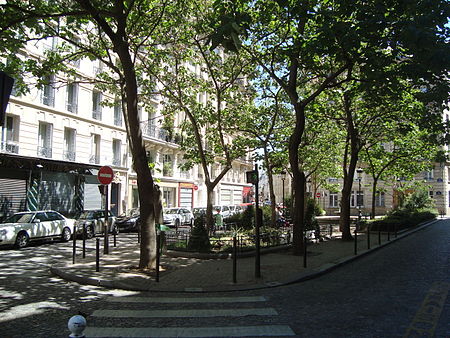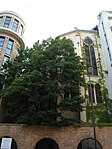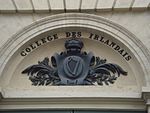Place de l'Estrapade
5th arrondissement of ParisSquares in Paris

Place de l'Estrapade is a square in the 5th arrondissement of Paris. It is located where rue de l'Estrapade meets rue Lhomond and rue des Fossés-Saint-Jacques and marks the border between quartier du Val-de-Grâce and la Sorbonne. It is named after the 'estrapade' or strappado inflicted there on prisoners (especially Protestants) until it was forbidden by Louis XIII of France. It has also been known as carrefour de Braque and place Neuve-de-Fourcy.
Excerpt from the Wikipedia article Place de l'Estrapade (License: CC BY-SA 3.0, Authors, Images).Place de l'Estrapade
Place de l'Estrapade, Paris 5th Arrondissement (Paris)
Geographical coordinates (GPS) Address External links Nearby Places Show on map
Geographical coordinates (GPS)
| Latitude | Longitude |
|---|---|
| N 48.8452 ° | E 2.3448 ° |
Address
Place de l'Estrapade
Place de l'Estrapade
75005 Paris, 5th Arrondissement (Paris)
Ile-de-France, France
Open on Google Maps







